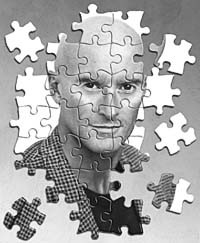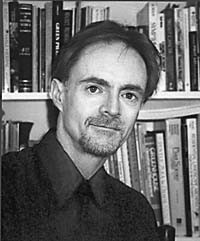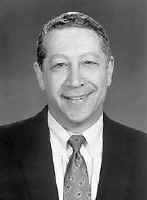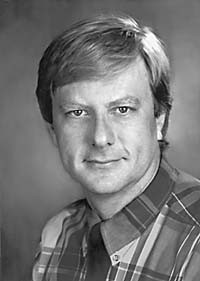By Daryl S. Paulson
 Ken Wilber--a household name in transpersonal studies--is looked upon by some as the major light-bearer in this field; but, for others, he is overly critical. Some say his theories will unify science, religion, and philosophy; others say his theories do not fit the data. All agree, however, that he has made an indelible impact on transpersonal studies.
Ken Wilber--a household name in transpersonal studies--is looked upon by some as the major light-bearer in this field; but, for others, he is overly critical. Some say his theories will unify science, religion, and philosophy; others say his theories do not fit the data. All agree, however, that he has made an indelible impact on transpersonal studies.
Four Wilbers and Four Quadrants
Ken Wilber began writing about transpersonal psychology in 1974 in the publication Main Currents in Modern Thought (founded and edited by the Theosophists Fritz Kunz and Emily Sellon). Shortly after, he wrote his first book, Spectrum of Consciousness (Theosophical Publishing House, 1977). About that time, he also founded the journal Revision with his friend and fellow intellectual, Jack Crittenden. Over the course of the last twenty years, Wilber has written more than a dozen books and many essays, mainly in transpersonal studies.
Wilber says that his theoretical view has evolved through four stages, which he terms Wilber I, Wilber II, Wilber III, and Wilber IV. Wilber I he considers his romantic period, when he first began writing, as exemplified in both Spectrum of Consciousness and No Boundary. At that time, Wilber viewed the ego as emerging from the unconscious, an act which is subsequently repressed and forgotten and split a number of times into dualistic oppositions. The first split is between God and self, the second between organism and environment, the third between ego and body, and the fourth between persona and shadow. The goal in psychospiritual development is to reunite each duality and reclaim the unity underlying each split until finally one realizes one's nonseparateness from the Absolute. A model of this kind is also used by Jungian and Freudian theorists, by transpersonal theorist Michael Washburn, and by Hameed Ali in his Diamond approach, with the major dualistic repressive split being between the ego and the unconscious. The psychospiritual goal is to reunite the ego and the unconscious. This model and its applications have provided valuable contributions to psychospiritual integration.
Wilber II evolved with the Atman Project and Up from Eden. At this time, Wilber began to incorporate a developmental perspective into psychospiritual growth, particularly as presented by Sri Aurobindo in The Life Divine and Integral Yoga. Instead of the ego lifting its repression of the unconscious, Wilber now viewed the ego-mind complex as developing consciously into higher transegoic levels, reached by stages rather than states of consciousness.
Wilber III was presented in the essay, "Ontogenetic Development," published by the Journal of Transpersonal Psychology and in his three chapters in Transformations of Consciousness. At this stage, Wilber further refined his model, integrating it with western developmental models (Piaget, in particular) and expanded his view to include Howard Gardner's research concerning multiple lines of development. In this view, a person does not develop from preconventional to conventional to postconventional in one thrust. Instead, one develops at differing rates along multiple lines--physical, cognitive, emotional, moral, psychosexual, interpersonal, spatio-temporal, as well as lines of self-identity, self-needs, world views, intimacy, creativity, specific talents (music, sports), and so forth.
Wilber IV incorporates Wilber III but adds to it the concept of quadrant development. From Wilber's point of view, human experience occurs in multiple dimensions, consisting of elements that are simultaneously wholes and parts (figure 1). For example, an atom is a whole atom but part of a molecule; a molecule is a whole molecule but part of a cell; a cell is a whole cell but part of an organ system; and so on. Similarly, a person is also both a whole person and a part of a culture or society.
Wilber views reality as having both interior and exterior dimensions, as well as simultaneous parts and wholes. Take, for example, a person--you or me. I, as an individual, am composed of both interior domains (thoughts, feelings, values, meaning, etc.) and exterior ones (cells, organs, behavior, etc.). I am also part of a whole culture of shared values, meaning, and beliefs, and part of the social structure (rules, roles, behaviors) of this society.

For Wilber, you and I interact in at least three distinct, but not separate, existential domains--the objective world (both right quadrants), our personal subjective world (upper left quadrant), and our shared intersubjective world of culture (lower left quadrant). None of these domains can be explained exclusively in terms of the others. For example, my subjective feelings of love for my wife cannot be solely explained through biochemical reactions, since my feelings are real, in and of themselves. But my feelings of love have both physical and intersubjective correlates. All three domains must be recognized and integrated.
Through this model, Wilber has deconstructed the compartmentalized, disconnected worldview of science (objective), religion (subjective), and ethics (intersubjective) and replaced it with a connected, integrated one. So as an empirical scientist, instead of viewing the world solely from my customary objective viewpoint, I now must also include both subjective and intersubjective viewpoints.
A Visionary Model and Technical Details
I and other empirical scientists have years invested in our professional objective endeavors. In order to expand my life boundaries and worldview, however, I must relinquish being an expert in a small world (some subspecialty of empirical science) and adopt the perspective of a mere student of life in the vastly larger, multidimensional Wilber IV world. To be safe, I tell myself, perhaps I should ignore his quadrant model and pick him apart in microbiology. True, he specifically includes microorganisms in his four-quadrant model, but he does not discuss them in great detail, so obviously his model is wrong. But then I realize that when we choose to give up our known world in order to gain another that is larger, but less known, we face this dilemma.
In the archaic period, instead of expanding their world to include objective truth, humans relied on magic to protect them from the unknown. Perhaps we also unconsciously rely on subfield specializations and their insular properties as a kind of magic to protect us from what lies beyond our knowledge. Much criticism of Wilber's integral model is limited to specific and very technical points within some level of specialization. Granted, those technical points are important and should be recognized. But we must remember that Wilber's model is fundamentally based on "orienting generalizations." That is, to construct his model he tends to use only the level of abstraction and those basic concepts that are generally accepted by workers in a field--generalizations we can use to orient ourselves to specific facts.
For example, not everyone agrees that human psychological development is composed of five, ten, or fifteen stages. However, virtually everyone agrees that it has at least three--preconventional, conventional, and postconventional. Wilber uses these three common stages for general, broad statements, but arranges the orienting generalizations into chains or networks of interlocking conclusions that provide a systematic vision. This practice, however, often comes back to haunt him, because subfield specialists become offended that he does not mention specific instances and detail what their research has uncovered. As a result, they conclude his model is wrong.
But can a general visionary model--a skeletal model--rooted in orienting generalizations really be different from the type Wilber has devised? To provide a model with any accuracy or precision, he is forced to "smooth" the data by the omission of many specifics. This does not make his skeletal model wrong, but rather it allows subfield specialists to complete the model, fleshing it out with their own valuable and necessary contributions. This is what Wilber himself explicitly suggests.
In addition, most critics point to specific instances in which Wilber's model appears not to fit their data exactly. And this is where most of the trouble lies. An example from my own area of biostatistics will illustrate. Like all models, statistical models, by nature, lose the specific detail of the individual or event, in order to achieve general, broad-scope knowledge, the "central tendency." The "central tendency" of a basic American family may be described as a white, middle-class family, with 2.5 children, $47,000 annual income, and a $120,000 home. This model does not describe any individual--only the average central tendency. That is the function of a model. This is true whether the model describes an ecological system, a human physiological system, weather conditions, shared "cultural" values, beliefs, or cognitive processes.
Rarely do statisticians or empirical scientists rely exclusively on central tendencies to describe data. They include "confidence intervals" that contain data not exactly the value of the central tendency (or average), but within a preset range, usually 95 percent. The 95 percent confidence interval contains individual observation values differing from the central tendency and clearly shows how far the individual measurements vary from one another. If the 95 percent range is narrow, the central tendency by itself describes the data well. If the 95 percent confidence range is wide, the central tendency by itself does not describe the data well. Thus the "confidence intervals" of the basic American family may include 1 to 3 children, an income of $37,000 to $57,000, and a house costing $110,000 to $130,000. These figures are considered to be the normal or expected deviation values from the central tendency.
Critics of Wilber's model have often simply pointed out normal observation variations from the central tendency, which are to be expected in the central tendency model. The differences, then, are not significant from Wilber's model. This has occurred, for example, in the book Ken Wilber in Dialogue (Quest 1998), except for the essays by Walsh, Murphy, and perhaps Puhakka. I suggest researchers take into consideration "normal variability" within the data and construct a "confidence interval" around their models to describe the actual phenomena more accurately and precisely than is possible using only the central tendency, and I suggest the same thing to Wilber.
Doing this will require a type of statistical analysis. Instead of using a parametric statistical model (a model using quantitative or numerical data: 119.5, 76.0, 59.0, and so on), as in the empirical sciences, human science researchers would be better served with nonparametric methods (models using qualitative data: yes/no, big/small, good/bad), particularly meta-analysis procedures. Meta-analysis is a nonparametric statistical approach used to evaluate multiple groups of data collected by different researchers, who evaluated the same or very nearly the same phenomena. This would help eliminate the problem of relying on a central tendency model by fleshing out the average with individual difference ranges, both above and below the central tendency.
For example, let us look at the work of Carol Gilligan, describing female moral development. If female development is focused primarily at the central tendency, as in Gilligan's work, women tend to negotiate the pre-conventional–conventional–post-conventional stages of moral development based on judgments of care and concern, instead of control and agency, as males do. But just what range of care and concern constitute a 95 percent confidence interval? Surely, some women described by Gilligan's model are more agency-focused than some men. And some women are more caring and concern-focused than other women. What degree of difference bounds a 95 percent confidence interval? Without including this information, even though there is a central tendency for care and concern in female moral development, we never really can decide how "well" Gilligan's model describes the data.
Since Wilber has a comprehensive model, we can start with it, adding to it, correcting it, or even restructuring it, based on the confidence interval range of the data, not just a central tendency data point. This is standard practice in both the hard and natural sciences, which provide the ranges of the data collected. Ranges are customarily not reported in qualitative human science studies, thereby suggesting there is only a single valid value or phenomenon which all observations should equal. This has been a downside of human science's rejection of many of the techniques and methods of empirical science and substituting for them phenomenology and other qualitative methods. But because confidence intervals are not constructed for these qualitative models, one can never determine how well the model fits the data. Thus our current situation leads to the deconstruction of everyone's models, and the net effect is that everyone loses.
From another perspective, as in quantum physics, where an electron can appear to be both a wave and a particle, psychospiritual studies may, in fact, require multiple models. For example, Wilber views growth as a continual ascent to higher, more inclusive stages of development. That is, for Wilber, one moves from pre-egoic to egoic to trans-egoic stages in multiple lines of development, but on an ascending path, commonly referred to as the "ladder model." However, Michael Washburn, a very gifted, articulate, and thorough transpersonal researcher, views growth as beginning at the pre-egoic level and then moving to the egoic level just as Wilber does, but then, unlike Wilber, Washburn views an individual returning to the pre-egoic level (which also contains the trans-egoic level) in order to develop into the trans-egoic stage. Washburn's view is referred to as the "U-turn model." Now, if Wilber's ladder model and Washburn's U-turn model cannot be integrated, then perhaps both are true, relative to one's vantage point, and neither can be explained in terms of the other.
Finally, there is much valuable work already collected by other researchers which would help flesh out Wilber's model. For example, areas such as mythology, psychospiritual growth in the clinical setting, ecological issues, gender issues, indigenous people's wisdom, near death experiences, various nonordinary states of consciousness, systems psychology, sociology, natural science, religion, somatic studies, and thanatology have much to offer. Moreover, with this sort of encompassing intent, the field could open up to include aspects of esotericism--for example, many of the works of the Theosophical Society, as well as those presented in, say, the Journal of Esoteric Psychology.
I suggest that we apply Wilber's broad and vast concepts as a starting point, which is what Wilber himself suggests, fleshing out his model with the specifics of other valuable contributors. In addition, we should focus not only on the central tendency, but also on a percent confidence interval (such as the 95 percent level), to provide a range of behavior, observations, and developments that fall within these confidence limits, describing the central tendency. In this way, multiple models, seemingly incompatible, can be integrated to produce a much more powerful insight into psychospiritual development and a truly comprehensive model.
This is the task that is set before us. Personal transformation is the pathway of Theosophy and all quests for Truth. With sustained effort we can regulate our attitudes and actions, and little by little we can change our keynote to one of compassion and concern for all. Then the vibration of our being will be able to permeate the atmosphere, not with the distress of a siren, but with the call to responsible living and the music of altruism.
Hast thou attuned thy heart and mind to the great mind and heart of all mankind? For as the sacred River's roaring voice whereby all Nature-sounds are echoed back, so must the heart of him "who in the stream would enter," thrill in response to every sigh and thought of all that lives and breathes.
 WATER SKIING is a sport that requires a good sense of balance that does not rely on any external prop. The constant motion of the water gives no reliable foundation, and although the rope is pulling the skier, the skier cannot pull on the rope. Novice skiers can have plenty of frustration until they learn to rely on the central balance point. As any good skier knows, one must maintain an interior balance somewhere just below the solar plexus, somewhat like the balance of a gyroscope. From this balance point, the shock of the waves can be absorbed by flexing one's knees and the pull of the rope can be equalized.
WATER SKIING is a sport that requires a good sense of balance that does not rely on any external prop. The constant motion of the water gives no reliable foundation, and although the rope is pulling the skier, the skier cannot pull on the rope. Novice skiers can have plenty of frustration until they learn to rely on the central balance point. As any good skier knows, one must maintain an interior balance somewhere just below the solar plexus, somewhat like the balance of a gyroscope. From this balance point, the shock of the waves can be absorbed by flexing one's knees and the pull of the rope can be equalized.

 Q: What is the ultimate objective of a Buddhist?
Q: What is the ultimate objective of a Buddhist? Suppose you could redesign the genetic makeup of any plant or animal species on Earth, including Homo sapiens, to suit your whims. Would you?
Suppose you could redesign the genetic makeup of any plant or animal species on Earth, including Homo sapiens, to suit your whims. Would you? Astrology as commonly understood is ego-oriented pop-culture nonsense. It is used as either entertainment or an effort to manipulate future circumstances for personal gain and protection. Some consult the stars to predict the stock market or determine propitious days and times to undertake actions, though there is no credible evidence that such predictions are valid. Newspaper horoscopes and books on finding your soul mate through sun signs belong in the realm of entertainment. Sometimes the stars are invoked as a New Age version of the "victim excuse": I'm having a bad day because my moon is in Pisces with Venus rising. There's nothing sacred, spiritual, or growth-oriented about such uses of the art.
Astrology as commonly understood is ego-oriented pop-culture nonsense. It is used as either entertainment or an effort to manipulate future circumstances for personal gain and protection. Some consult the stars to predict the stock market or determine propitious days and times to undertake actions, though there is no credible evidence that such predictions are valid. Newspaper horoscopes and books on finding your soul mate through sun signs belong in the realm of entertainment. Sometimes the stars are invoked as a New Age version of the "victim excuse": I'm having a bad day because my moon is in Pisces with Venus rising. There's nothing sacred, spiritual, or growth-oriented about such uses of the art. John White is an author in the fields of consciousness research and higher human development. He has published fifteen books, including The Meeting of Science and Spirit, What Is Enlightenment? and A Practical Guide to Death and Dying, as well as a children's story, The Christmas Mice. His writing has appeared in the New York Times, Saturday Review, Reader's Digest, Esquire, Omni, and Woman's Day, as well as in four earlier issues of the Quest. He lives in Cheshire, Connecticut. This article is drawn from his forthcoming book "Toward Homo Noeticus: Reflections on God-Realization and Higher Human Development."
John White is an author in the fields of consciousness research and higher human development. He has published fifteen books, including The Meeting of Science and Spirit, What Is Enlightenment? and A Practical Guide to Death and Dying, as well as a children's story, The Christmas Mice. His writing has appeared in the New York Times, Saturday Review, Reader's Digest, Esquire, Omni, and Woman's Day, as well as in four earlier issues of the Quest. He lives in Cheshire, Connecticut. This article is drawn from his forthcoming book "Toward Homo Noeticus: Reflections on God-Realization and Higher Human Development." Ken Wilber--a household name in transpersonal studies--is looked upon by some as the major light-bearer in this field; but, for others, he is overly critical. Some say his theories will unify science, religion, and philosophy; others say his theories do not fit the data. All agree, however, that he has made an indelible impact on transpersonal studies.
Ken Wilber--a household name in transpersonal studies--is looked upon by some as the major light-bearer in this field; but, for others, he is overly critical. Some say his theories will unify science, religion, and philosophy; others say his theories do not fit the data. All agree, however, that he has made an indelible impact on transpersonal studies.
 Daryl S. Paulson, PhD, is president and CEO of BioScience Laboratories, Inc., an international research firm focusing on the evaluation of medical and pharmaceutical antimicrobial products. He has doctorates in both psychology and human science.
Daryl S. Paulson, PhD, is president and CEO of BioScience Laboratories, Inc., an international research firm focusing on the evaluation of medical and pharmaceutical antimicrobial products. He has doctorates in both psychology and human science.